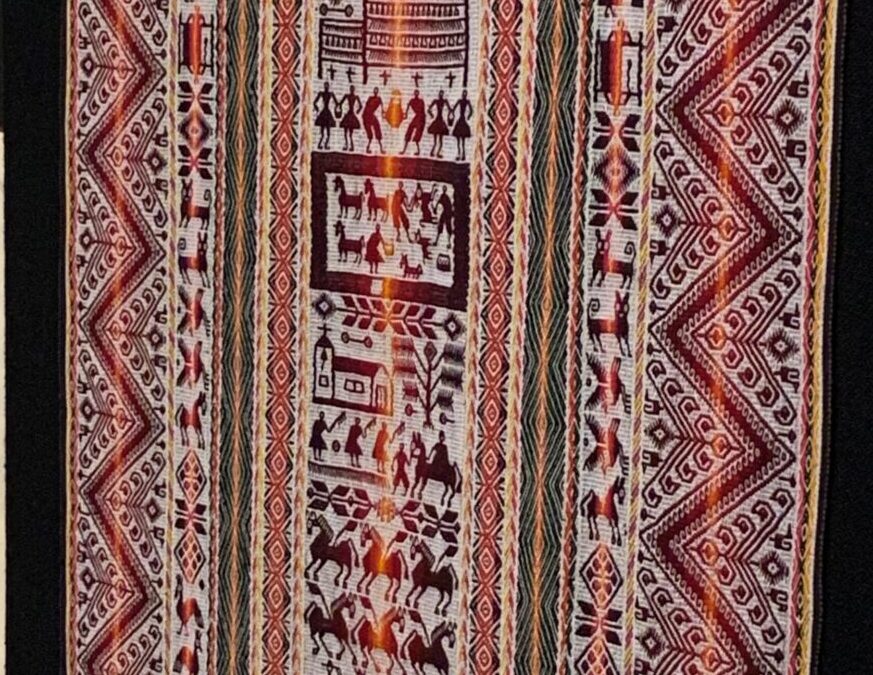Yesterday I had a wonderful chat with my friend Anne Merrow, one of the founders of Long Thread Media, for an upcoming Long Thread podcast. (I’ll post a link when it releases.) Anne asked me a very interesting question: whether the time I spend volunteering to support Indigenous weavers in the Andes is very different from the time I spend exploring my own Scandinavian textile roots. I had never thought about it before, and when I did, I realized that I’m drawn to Andean communities and textiles for many of the same reasons I’m drawn to Nordic ones: these folk arts arts are the expression of just plain folks, and that’s what makes them special.
When I was a child, my grandmother had a wooden plate with brightly painted flowers hanging above the table in the breakfast nook. To me, it looked very much like the other rosemaling-painted bowls and plates in her house, and I loved its bold colors. It wasn’t until I grew up and traveled that I realized that plate had come from Mexico. Grandpa worked for the Pacific Fruit Company, and he probably brought it back from a trip to visit a fruit supplier south of the border. Looking back, I’m not surprised at how well it fit with all Grandma’s Norwegian treasures, because folk are folk.
I’ve always loved how folk art expresses the everyday life of people who live in close community. They make things that they need in their daily lives, but there seems to be a universal drive to make those object beautiful and meaningful as well as functional. Through centuries, people who live in small, simple houses have painted flowers on furniture, bowls, walls, and tiles to brighten their homes. Scenes of community celebrations—weddings, harvests, holidays—were woven into or embroidered on cloth. Humorously shaped or intricately carved vessels honored guests while serving mead or beer or wine or chicha, the corn beer of the Andes. Folk art shows what its makers value, and always that is family, community, the abundance of the earth, and the beauty of nature and of the changing seasons.
When you and I engage in these traditional arts, we’re uniting ourselves with people down through the ages and around the world. I have thrilled to lovely yarn with fiber artists in Scandinavia, laughed with weavers in Peru and Bolivia as I tried to learn their intricate designs, and elicited proud smiles from a previously dour guard at the Hermitage Museum in Russia when I asked through gestures if she had knitted her sweater. The making of everyday things connects us and reinforces the basic human values that we all share. What greater reason to get out your yarn than to have the barriers drop away and rejoice in our shared humanity.


I’m leading a tour to Bolivia April 22nd through May 5th, 2025. Y’all come! You can find out more at http://www.andeantextilearts.org/tours.